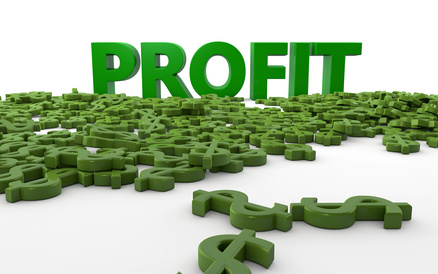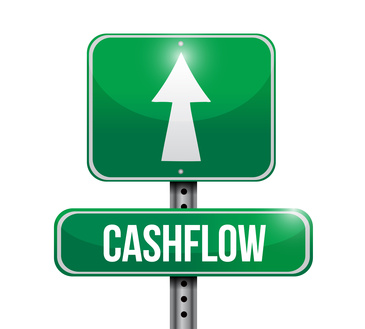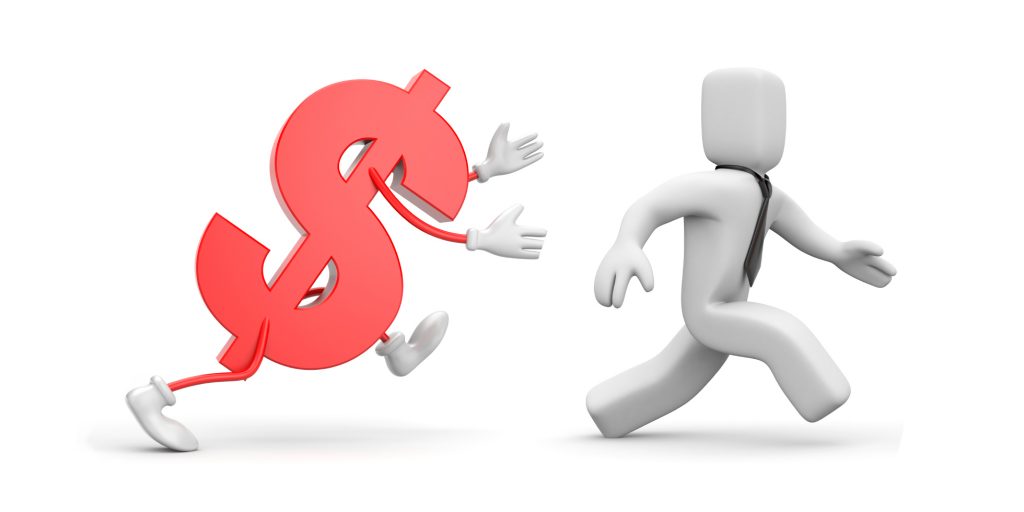Cash on Cash Returns
 As you might expect, accountants like to play with numbers.
As you might expect, accountants like to play with numbers.
My wife (Julie) for instance, is what I would call a typical accountant who is actually excited when she manages to complete a complex account reconciliation. So excited in fact that she has been known to give herself a silent high-five and whisper ‘Yes!’ under her breath.
However I’m here to tell you that the maths of successful property investing is a lot different from the maths of accounting and number crunching.
This point is illustrated by a change in accounting reporting which occurred in the early 1990s.
Profit Is Not The Same As Cashflow
If you were in business around that time then you might have prepared something called a ‘Source and Application of Funds’, which was also called a ‘Funds Statement’. This statement provided little more than a formal reconciliation of profit back to a movement in the bank balance.
A curious thing happened towards the end of the 1980’s and at the beginning of the 1990’s… a number of profitable companies with strong financial reports nevertheless started going broke. As time passed, more and more companies seemed to hit hard times and eventually there was a push to replace the funds statement with a formal cashflow statement that looked beyond operating activities and also delved into investing and financing activities too.

The bottom line was that the regulators saw that profit is quite a subjective term that can be easily manipulated by a clever accountant. Cashflow on the other hand can not be manipulated; once a transaction has passed through a bank statement, it can not be reversed or eliminated – it’s like a footprint in wet cement.
In hindsight we can say that in the early 1990’s, those companies with poor cashflow went under while those with good cashflow were either taken over or were primed for growth. The same is true with the recent tech boom and the same will be again true in the months ahead when the property market may not be as rosy as it is now.
The Subjective Nature of Profits
When I was an accountant I made the mistake of focusing too much on profit. I was also quite fixated on the term ‘return on investment’, which is calculated by net profit divided by asset value.
Hear me when I say that because profit is still largely a subjective and easily manipulated figure, a return on investment calculation is only as strong as the integrity of the person preparing the reports, or the accounting system that collects the raw data.
In terms of property… too many investors seem obsessed with ‘net worth’, which is the difference between the value and combined debt of their property portfolio. What good is net worth if your cashflow haemorrhage is forcing you broke?
As I progressed from theoretical accountant to part-time investor, I came to realise that a lot of what I had learned about accounting allowed me to pass exams, but it wasn’t necessarily equipping me for life as a successful investor.
Moving away from the shaky profit concept, I decided that the lifeblood of my investing success was going to be cashflow. This relates to ‘payback’ which is measured by the cash on cash returns concept.
Money is the lowest common denominator in any transaction… it speaks for itself and reflects success, or otherwise, simply and in a language that everyone understands.

Rarely do you hear, “How much profit did you make?” On the other hand you probably hear, “How much money did you make?” all the time!
Cash on Cash Returns
On reflection, my investing success is a matter of understanding the concept of ‘payback’.
In layman’s terms, payback means the length of time you expect it will take before you have your initial capital or cash returned.
The best way to measure payback is by using a concept called the cash on cash returns (which I’ll abbreviate to “CoCR”).
CoCR is a relatively simple calculation:
(annual net cashflow ÷ by your initial cash/capital needed to acquire the investment)
Let’s look at the two cash on cash returns variables:
Net Annual Cashflow: This is the sum of your cash inflows less your cash outflows. Note that cash outflow includes principal loan repayments and capital repairs. In this sense, cash outflow is very different to the idea of expense where capital repairs are capitalised and then later depreciated.
Initial Capital/Cash Required: This is just the sum of the money you spend, or the capital you eat into, to purchase your investment. In terms of property it is usually the sum of your deposit plus your closing costs.
For example, if you bought a property that delivered an annual net cashflow of $1,800 and paid $200,000 on the basis of a 20% deposit and with $10,000 of closing costs, then your CoCR would be 3.60% ($1,800 ÷ ((20% * $200,000)+ $10,000)).
The pre-tax payback period (ie time take to for this investment to repay your initial capital) would be 27.78 years.
Personally, I make it a rule that I want my money back as soon as possible, and generally in less than ten years, which means my minimum cash on cash return is usually 10% (ie. the result under ‘The 11 Second Solution”).
The Quiz

I invite you now to turn to page 160 of From 0 to 130 Properties in 3.5 Years and complete the multiple choice question contained on that page.
The answer to the quiz is (B). Your initial cash down is your deposit of $40,000 plus your closing costs of $10,000. If you want to make a minimum return of 25% then it’s just an equation of: x = 50000 * 0.25.
Country Pub Example
Also in From 0 to 130 Properties in 3.5 Years is the example of the country pub. I’ve provided the analysis of the cash on cash returns so you may fill in the blanks on page 161.
| Initial Cash Down | |
|---|---|
| Deposit (30%) | $75,000 |
| (30% * $250,000) | |
| Closing Costs | $12,500 |
| (5% of purchase price $250,000) | |
| Total Cash Needed | $87,500 |
| Cash Inflows | |
| Rent | $33,600 |
| Cash Outflows | |
| Outgoings | $0 |
| (all paid by the tenant) | |
| Repairs | $1,680 |
| (5% of rent $33,600) | |
| Interest | $14,000 |
| (8% interest only loan on 70% of the purchase price $250,000) | |
| Total Cash Outflows | $15,680 |
| Cash on Cash Return | |
| Cash Inflows | $33,600 |
| – Cash Outflows | $15,680 |
| = Net Cashflow | $17,920 |
| ÷ Initial Cash Down | $87,500 |
| = Cash on Cash Return | 20.48% |
| Payback period | 4.88 years (100 ÷ 20.48) |
Final Words
I’d really like to encourage you to let the cashflow results of your investing speak for themselves. Profit is subjective and net worth can quickly rise and fall depending on the state of the market.
Cashflow on the other hand can be banked and banked on. It’s hard to argue with something that has weathered all manner of markets and market conditions and is as relevant today as it ever was in the past.

To keep cash on cash returns simple… make it a rule that your investments must make money from day one.





Got something to say? Post a comment...
You must be logged in to post a comment.